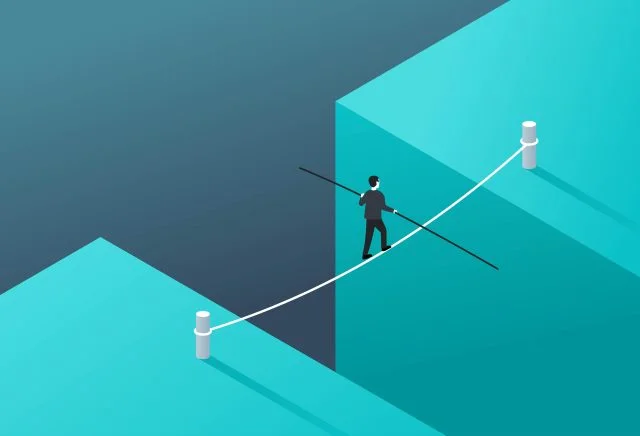
Is Americans’ Savings Buffer Wearing Thin?
COVID has worn Americans down emotionally. But it might be eating away at their financial reserves too – at least for some people.
As the pandemic has dragged on, many people said in newly released surveys that they are more anxious about their finances and feel that their savings are wearing thin.
We won’t get a true picture of the pandemic’s impact until it is far away in the rear-view mirror. For one thing, Congress’ intent when it doled out historic amounts of cash assistance to workers was to carry them through the COVID lockdowns and resulting unemployment. And it worked.
After federal relief checks were deposited into bank accounts, the saving rate shot up to about 34 percent in April 2020 and to almost 27 percent in March 2021 – the highest levels this country has seen in decades. The rate has floated down to single digits as people have spent the extra money but remains relatively high.
Recent job gains and wage increases should also bolster balance sheets. Businesses added 626,000 more jobs in June through September than the U.S. Department of Labor had originally estimated, and October was a blockbuster month, with 531,000 new jobs created. In the November jobs report, unemployment hit a pre-pandemic low of 4.2 percent.
But these signs of progress are mixed in with feelings of unease. One thing is clear from surveys of workers by T. Rowe Price, said Joshua Dietch, vice president: The challenges that existed before COVID “didn’t get any lighter as a result of the pandemic.”
NPR also fielded a financial survey in August and September of this year. More than a third of U.S. households said they are having “serious financial problems.” And the workers who have suffered the most during the economic downturn last year – people of color – are in the worst shape: more than half of Black, Hispanic, and Native American households said their financial problems were serious.
A deterioration in savings could be behind that feeling of financial insecurity. Nearly 40 percent of households in NPR’s survey with the Robert Wood Johnson Foundation and the Harvard T.H. Chan School of Public Health said they have no “savings to fall back on” – that is double the share who reported having no savings prior to COVID. The share of Blacks, Hispanics, and Native Americans who lack savings also doubled, though to much higher levels of 63 percent, 56 percent, and 55 percent, respectively.
But a more nuanced analysis showed that the later installments of the relief checks actually improved household balance sheets at least temporarily. While a majority of individuals spent the checks deposited into their accounts in the spring of 2020, they either banked the remaining two checks – at the end of 2020 and in the spring of 2021 – or used the money to pay down debt.
Even these rosier pictures of Americans’ finances come with a caveat, however. JP Morgan Chase analyzed cash balances and found that the stimulus checks caused a bigger bump in low-income and minority households’ reserves. But these increases were also “more short-lived among low-income Black and Latinx families.”
Workers’ retirement preparation was not great prior to COVID, and well into the pandemic they’re feeling more uneasy about their prospects. This information comes out of a comparison of two surveys by T. Rowe Price, the financial services company, in the summers of 2020 and 2021.
Working-age adults who are saving money in a 401(k) were asked if they felt that their contributions, combined with their employers’ contributions, were enough to ensure a “comfortable retirement.” Last year, 44 percent said “no” or “not sure.” This year, 50 percent said no or not sure.
These feelings don’t fully jibe with what the research says about COVID’s impact on retirement. The stock market – and 401(k) balances – rapidly rebounded from the early 2020 slide, and there was only a slight uptick in retirement plan sponsors who reported that more employees withdrew retirement savings during the pandemic.
With the arrival of the Omicron variation of COVID, it’s impossible to predict how the pandemic will end. But Americans should prepare themselves for the possibility of more economic uncertainty.
Read more blog posts in our ongoing coverage of COVID-19.
Squared Away writer Kim Blanton invites you to follow us on Twitter @SquaredAwayBC. To stay current on our blog, please join our free email list. You’ll receive just one email each week – with links to the two new posts for that week – when you sign up here. This blog is supported by the Center for Retirement Research at Boston College.
Comments are closed.







Let’s hope the savings buffer is wearing thin. We need to get the labor force participation back up to curb labor shortages/wage inflation